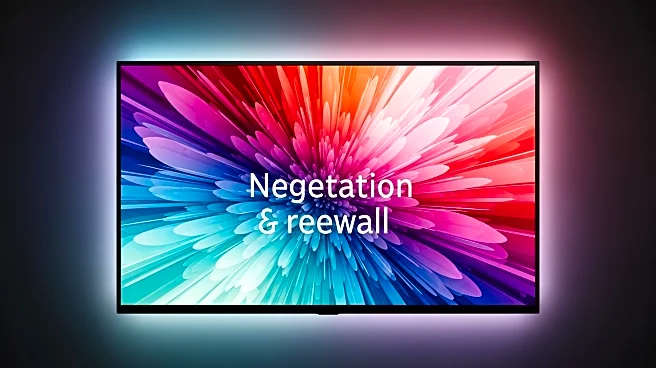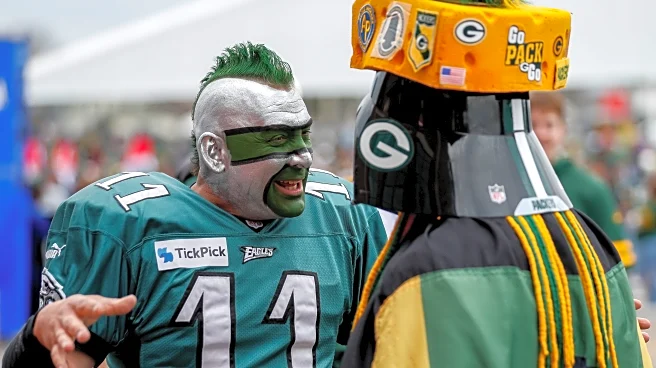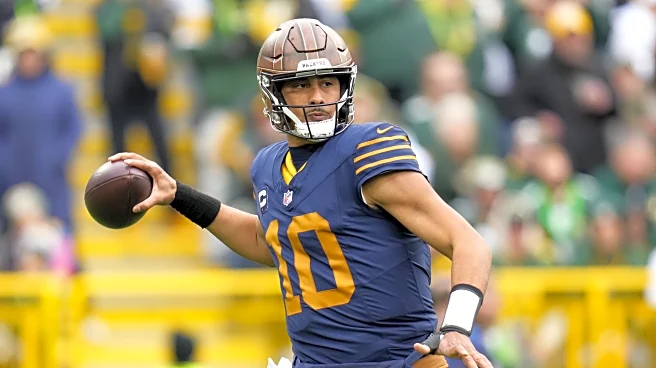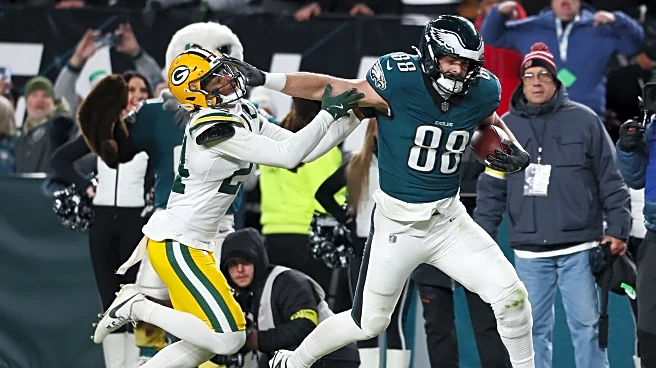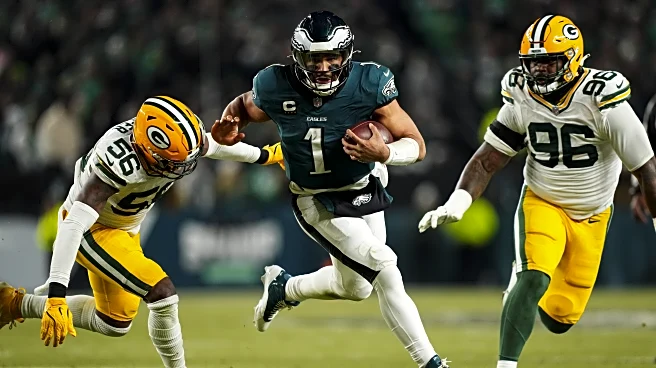What's Happening?
The recent Monday Night Football game between the Eagles and Packers attracted an impressive 20.6 million viewers, despite a blackout on YouTube TV affecting Disney-owned channels. The game was broadcast
across multiple platforms including ABC, ESPN, ESPN+, ESPN Deportes, and NFL+. This viewership figure raises questions about how much larger the audience could have been if YouTube TV had been able to broadcast the game. The blackout is part of ongoing disputes between YouTube TV and Disney, impacting the availability of certain channels to viewers.
Why It's Important?
The significant viewership numbers for the Eagles-Packers game highlight the strong demand for NFL content, even amidst broadcasting challenges. This situation underscores the importance of multi-platform broadcasting strategies for sports networks to reach wider audiences. The blackout on YouTube TV could potentially affect advertising revenues and viewer engagement for Disney-owned channels. Additionally, it reflects broader industry challenges related to content distribution and licensing agreements, which can impact consumer access to popular programming.
What's Next?
As the blackout continues, stakeholders including Disney and YouTube TV may face pressure to resolve their disputes to restore access for viewers. The ongoing negotiations could lead to changes in how sports content is distributed across streaming platforms. Meanwhile, sports networks might explore alternative strategies to mitigate the impact of such disruptions, ensuring that major events like NFL games remain accessible to the largest possible audience.
Beyond the Headlines
The blackout situation highlights the evolving landscape of media consumption, where traditional cable and satellite services are increasingly supplemented or replaced by streaming platforms. This shift necessitates new approaches to content licensing and distribution, potentially influencing future agreements between media companies and streaming services. The incident also raises questions about consumer rights and access to content in the digital age.



